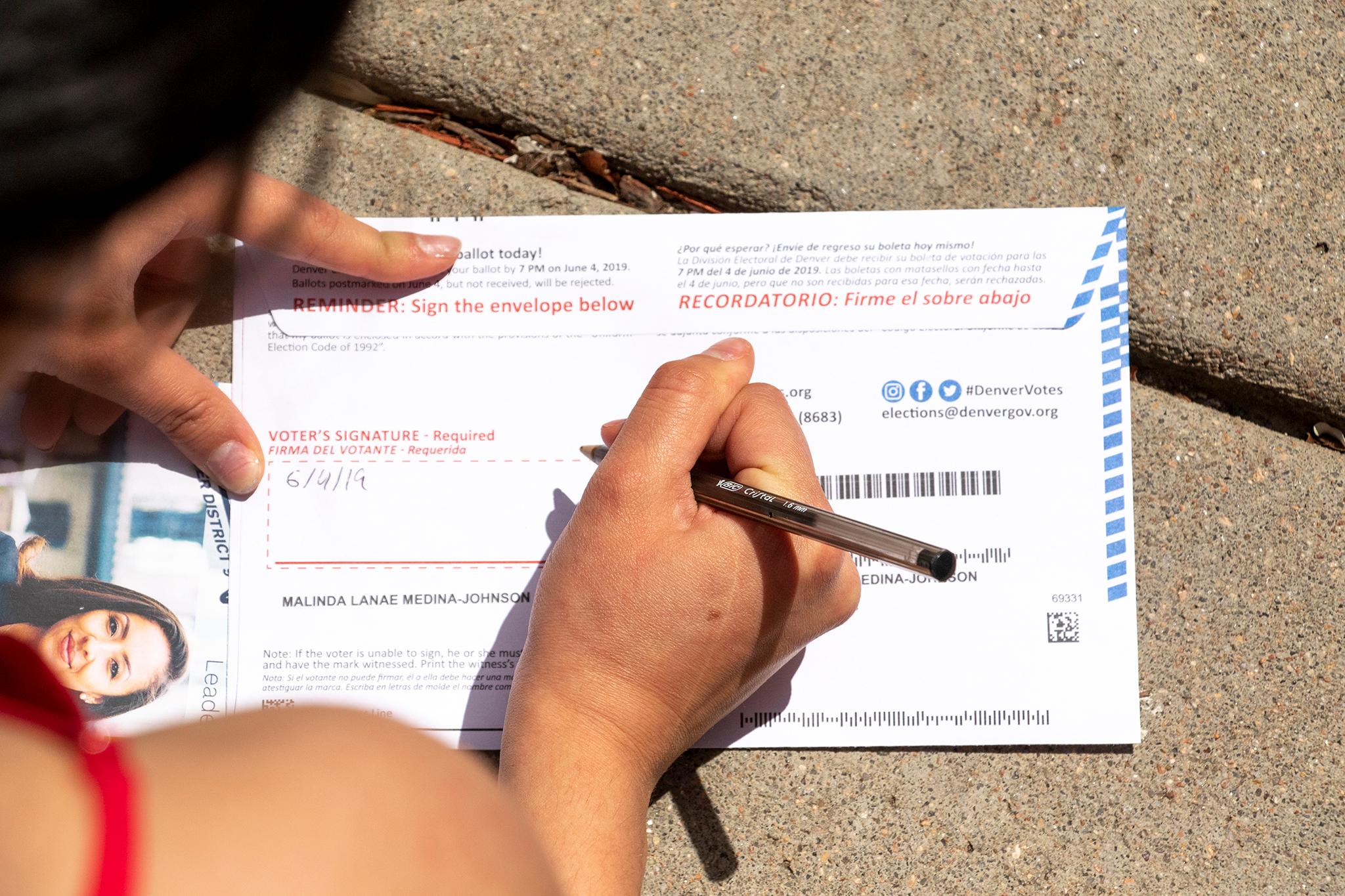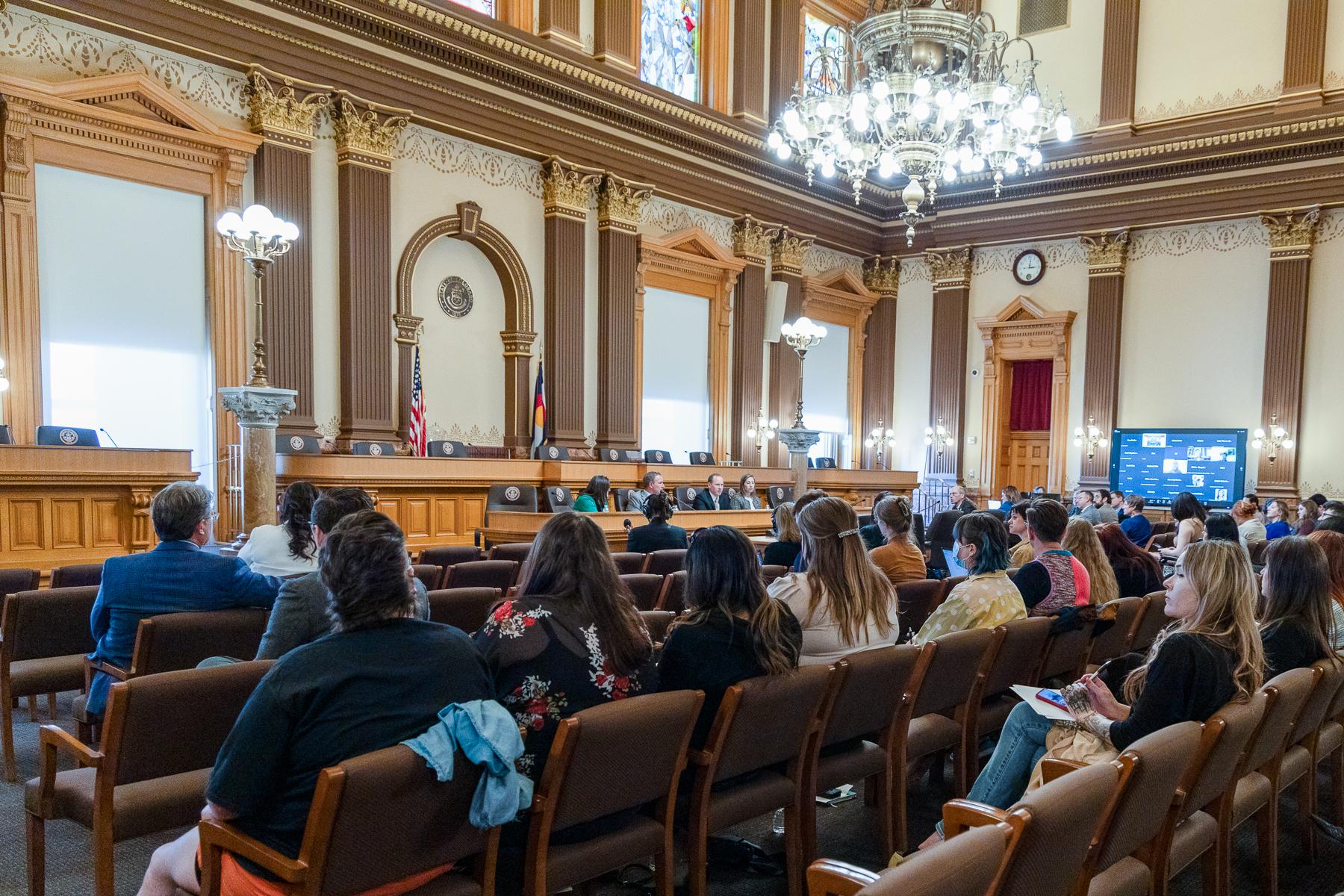
Editor's Note: This story was first published on Oct. 12, 2020. Some details have been updated since then.
The single most common reason for a rejected ballot in Colorado is a mismatched signature between your mail-in ballot envelope, and the signature on file for you.
If your ballot is rejected, the county you will live in is required to notify you — within three days of your voting date — by email or snail mail (some counties will even send you a text) of how to fix the error. But, it’s true that people get busy, the letters can seem confusing and notifications just get missed.
Can you check to see what the signature on your voter file looks like, to make sure your mail-in ballot isn’t rejected?
Short answer: It may depend on your county, but statewide, “there’s not an easy way to see what signature is on your voter file,” said Peg Perl, Elections Director for Arapahoe County.
Long answer: Well, the long answer isn’t much different. But there are steps you can take before and after voting to help make sure your ballot gets accepted.
1). Make sure you’re enrolled in Colorado’s new statewide ballot tracking system
In 2020, Colorado launched a statewide, automatic ballot tracking system called ballottrax. It allows you to track your 2020 ballots from start to finish. You can ensure you're enrolled at colorado.ballottrax.net — or you can can opt out.
What ballottrax won’t tell you though, is why your ballot may have been rejected, or if it’s something you, the voter, can cure — that information will come from your county clerk’s office, and they’ll either contact you by phone, mail or e-mail (more on that below).
Prior to statewide ballot tracking, only 13 counties in Colorado — Arapahoe, Boulder, Broomfield, Chaffee, Denver, Jefferson, La Plata, Las Animas, Logan, Pitkin, Routt, Washington and Weld — had automatic ballot notification tracking set up.
Denver launched the state’s first ballot notification system in 2009 — that one is called BallotTRACE, and it allows you to see all the previous Denver elections you’ve voted in, and whether or not your ballot had been accepted.
2). Think twice before updating your voter registration to get a new signature on file
If you have serious concerns about your signature, yes — you could go to your county clerk’s office to update your voter registration. But it’s a risky move so close to the election.
“The only way to get a new signature in the mix is going, in-person to a clerk’s office. And it would have to be processed,” Perl said. “If you come in to do a voter registration form, that's going to get in the queue with all the other voter registration forms. So it’s not instantaneous.”
Instead, one idea Perl suggests is making sure your voter registration contains your email address and phone number — which is something you can do online at Colorado’s Secretary of State’s website. That way, if your ballot is rejected and you need to cure it, the county has multiple ways of contacting you.
But as far is updating your voter registration in-person, just to get a new signature on file, Perl says, “It’s a better bet not to change it, but to keep an eye out if we do send you a cure letter.”
3). Check the signature on your Driver's License or state ID card for reference, and stay away from scribbles
If you’re getting nervous about your signature — or forgetting how you usually sign your name (hey, it happens) — Perl recommends looking at the signature on your Driver's License or ID card for reference.
“That signature is one of the signatures we look at. That’s what’s on file to be compared,” Perl said.
Of course, that’s not the only signature of yours on file at your county clerk’s office. Also on file is the signature you used the last time you signed your ballot envelope (that might be the November 2020 election). And then there’s the time before that, the time before that, and so on.
The signature check system defaults to an image of the most recent signed document the government received from you. If you’re a dedicated voter, that could be as recent as the last time you returned a ballot.
If your ballot was rejected in the primaries, and you signed a voter cure letter to fix it — that’s the most recent signature of yours on file. The system does also keep all of your old signatures on file too, in case the judges doing the verifying want to review a few more examples before making their call.
Another tip Perl has for signing your ballot: stay away from the “quickie credit card version” of your signature — you know, the one you’d use when signing, for example, a credit card receipt at a restaurant. That one is more likely to contain scribbles.
4). Vote! And pay attention to your mail, email and texts for the next few days
You should do that anyway because your mother would like to hear from you and make sure you’re OK. But seriously — be vigilant.
If your ballot is rejected for reasons you can correct, your county must send you a letter in the mail (it's the law), so pay attention to your snail mailbox. You may also receive an email or text, if your voter registration has that information on file and if your county is able to do that. After you receive your notice, you have eight days until after the election to fix your ballot.
“The most important thing is keep an eye out from info from the county coming to you,” Perl says.
Make sure you read the instructions on that letter, since it will outline exactly what action you have to take.
Here’s a sample timeline of what a ballot rejection might look like:
- Date Voted: Oct 11
- Ballot signature is reviewed by machine, if rejected:
- First, it goes to an initial signature review by a trained judge
- If rejected again, the signature is reviewed by a bipartisan panel of judges
- If the signature is finalized as non-matching, a cure notice is sent to you — within three days of your voting date — via email, mail or possibly text
- Date you might receive a cure notice in the mail: Oct. 14
- Date you must fix your ballot by, in order for it to be counted in the 2020 election: Nov. 10
5). Inform yourself on how elections work in Colorado
We can help. We have a lot of stories about it! Here’s where to start:
- A 2021 voter guide, for what’s actually on your ballot
- On how to vote in Colorado, including important dates to know
- On how to automatically track your ballot
- On how and why mail-in ballots get rejected in Colorado
- On hard lessons learned about signing the back of your ballot
- On why Colorado is a pretty darn safe place for election safety









